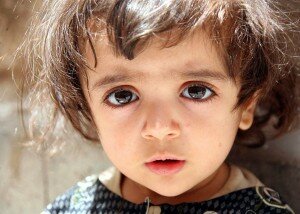Amidst the wave of protests that sparked protests across the Middle East in 2011, Syria joined the crowd of Egyptian and Tunisian citizens whom called for their governments to address their qualms. Yet two years after the Arab Spring, the Syrian state continues to propel conflict and disagreement amongst opposing parties.
 As a result of the ongoing violence, there has been an exceedingly urgent need for humanitarian aid to treat about four million injured Syrian citizens. In a situation report released by the World Health Organization (WHO) in February, the Ministry of Health has reported that 55 percent of public hospitals have been damaged (31 percent out of service; 24 percent partial damage) and 142 health workers have been reported to have been directly affected (52 killed; 76 injured; 14 kidnapped). Shortages in medical resources and facilities, including long hours of electricity outages, have further made it more difficult to respond to the rising number of Syrians in need of medical assistance. The ongoing climate has also had an effect on waste and safe water management, adding to environmental concerns which make way for disease and infection.
As a result of the ongoing violence, there has been an exceedingly urgent need for humanitarian aid to treat about four million injured Syrian citizens. In a situation report released by the World Health Organization (WHO) in February, the Ministry of Health has reported that 55 percent of public hospitals have been damaged (31 percent out of service; 24 percent partial damage) and 142 health workers have been reported to have been directly affected (52 killed; 76 injured; 14 kidnapped). Shortages in medical resources and facilities, including long hours of electricity outages, have further made it more difficult to respond to the rising number of Syrians in need of medical assistance. The ongoing climate has also had an effect on waste and safe water management, adding to environmental concerns which make way for disease and infection.
In particular, WHO reported a rise in cutaneous leishmaniasis cases that have impacted 995 individuals in Hamah, Hassaka, rural Damascus and Homs. Leishmaniasis is a widespread, yet little known disease, classified by the WHO as one of the 17 neglected tropical diseases (NTDs). It is transmitted by the bite of blood-feeding insects, known as sandflies. Sandflies often breed in deteriorated regions and are more prominent in areas of environmental changes. The disease usually produces ulcers on exposed areas of the body, and serious cases can often cause disabilities. Even after the ulcers heal, they leave permanent s cars that can sometimes be the cause of social prejudice. While WHO has partnered up with local non-governmental organizations to help in transporting medical treatment and assistance, the ongoing nature of the conflict could regress any progress made to counter its rise.
Along with the internal issues that are rising in response to the conflict, the outpour of refugees in neighboring countries also provides challenges for the health sectors of those regions. Limited funding, space and response in Jordan, Lebanon, Egypt and Iraq leave refugees vulnerable to not only displacement, but also to more critical conditions for diseases that require medical attention. In spite of the bereavements WHO has been continuing to establish more programs to assist and monitor health concerns in Jordan and Lebanon.
